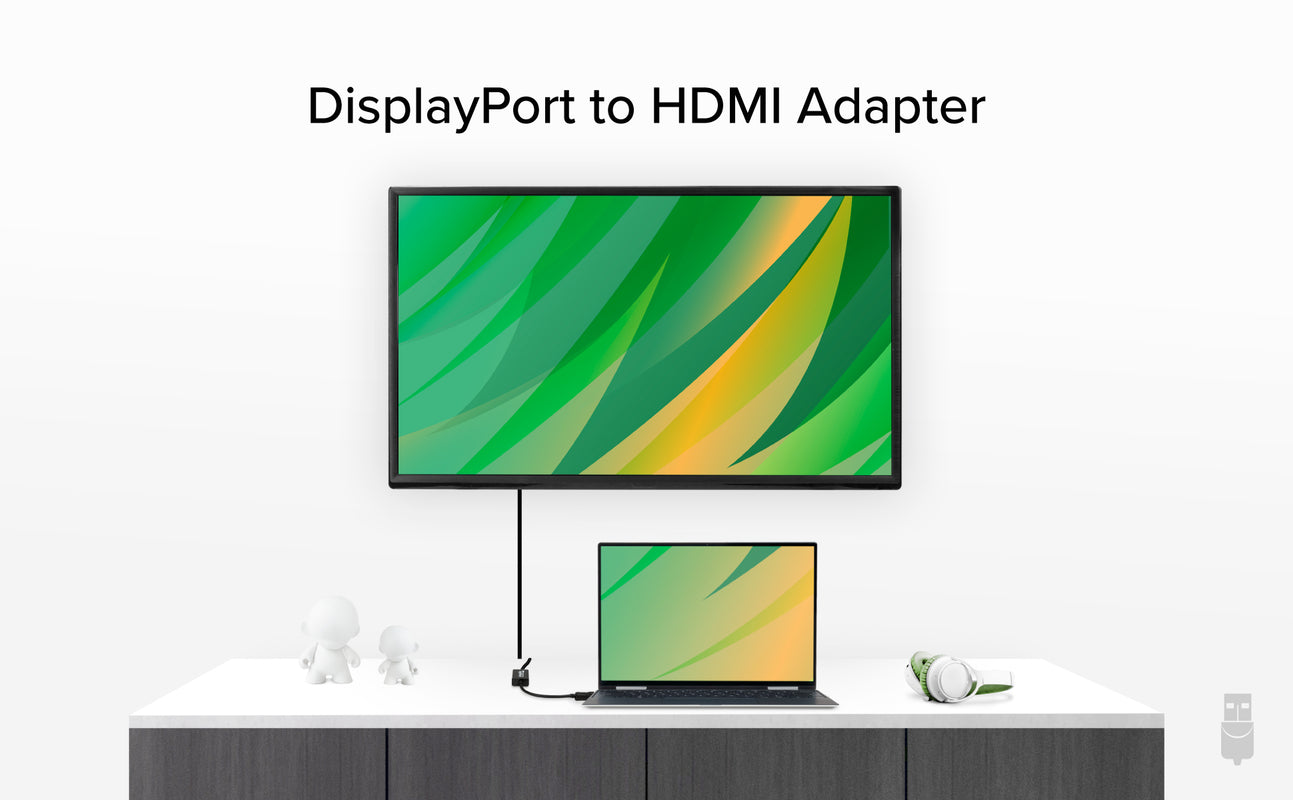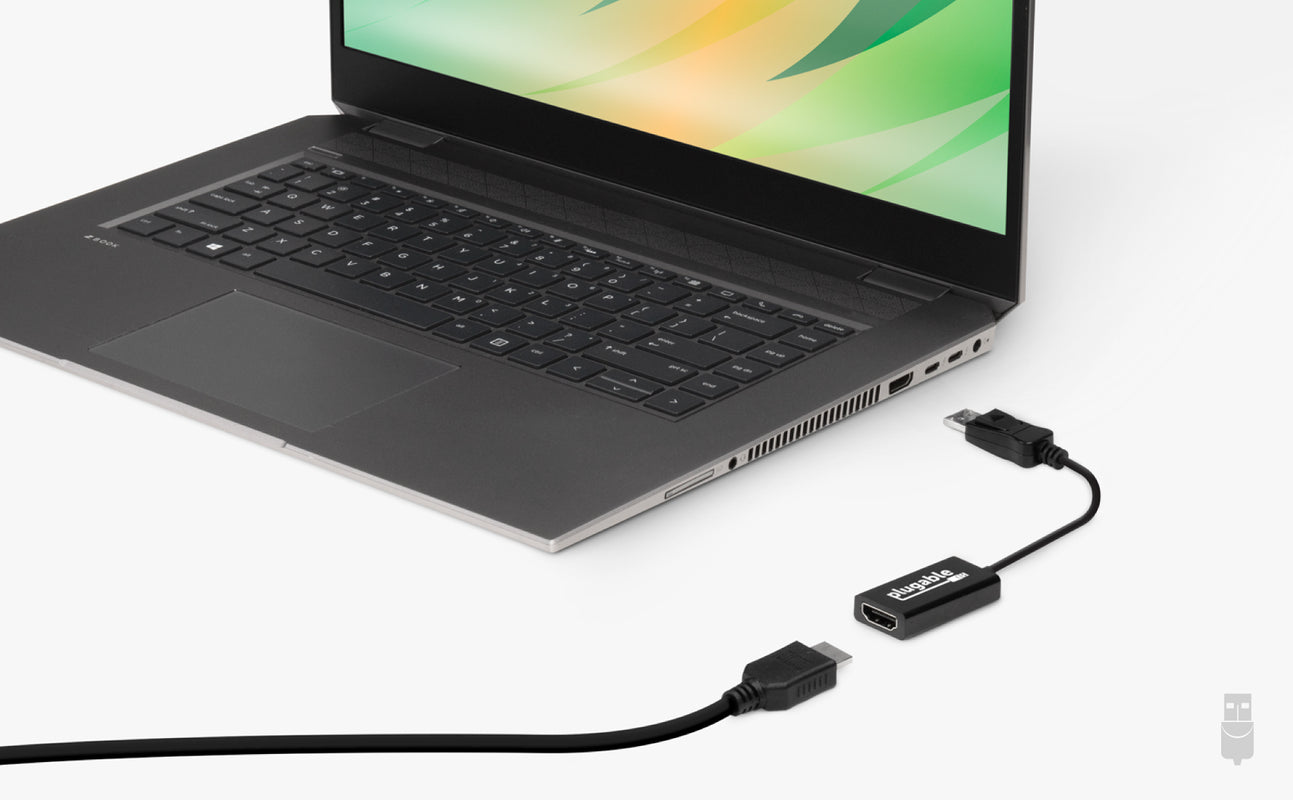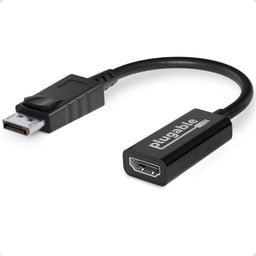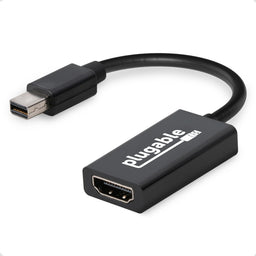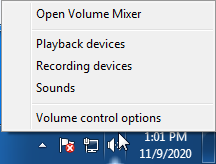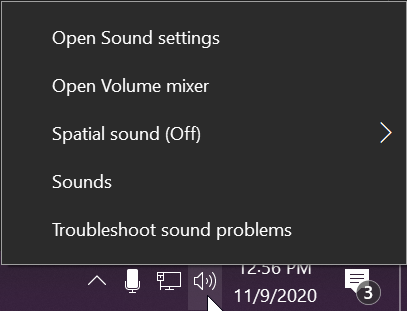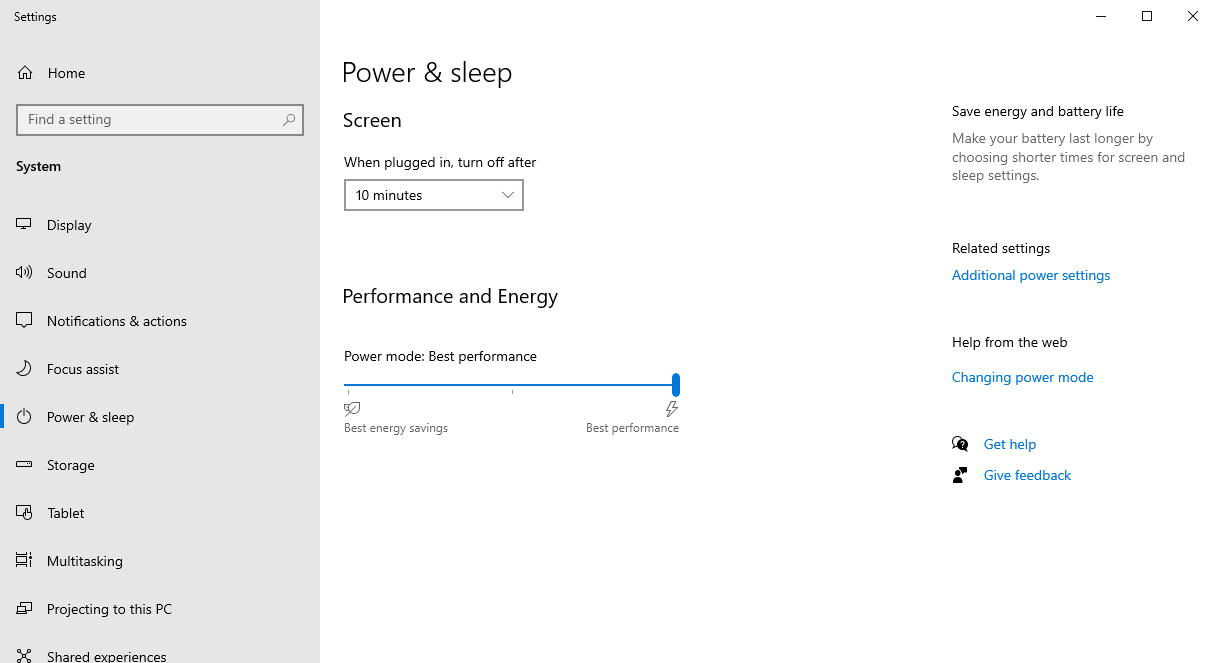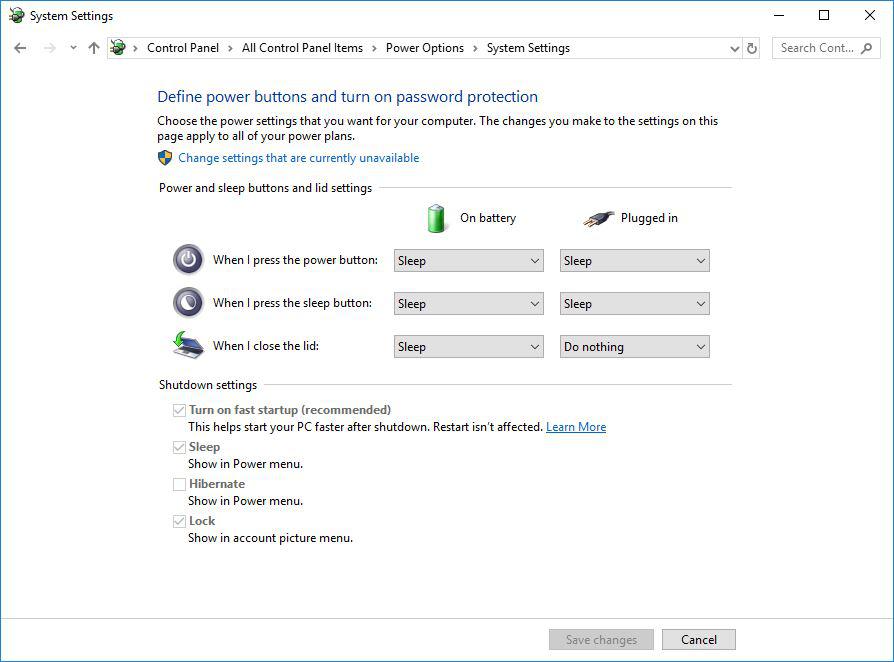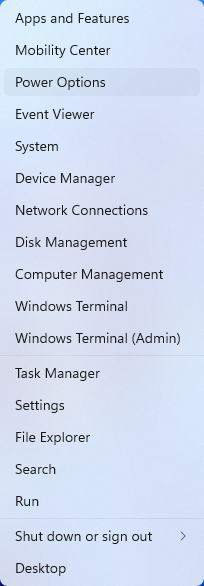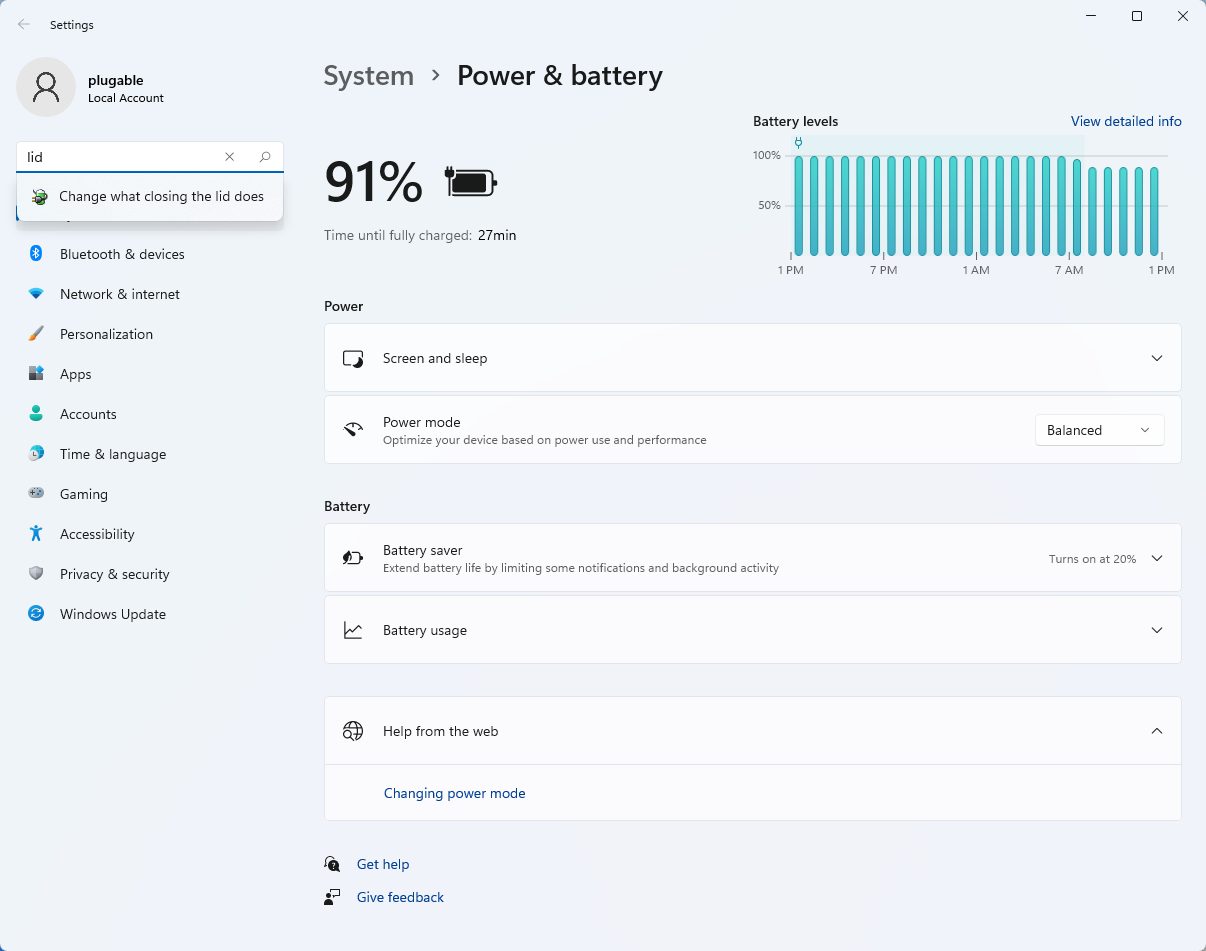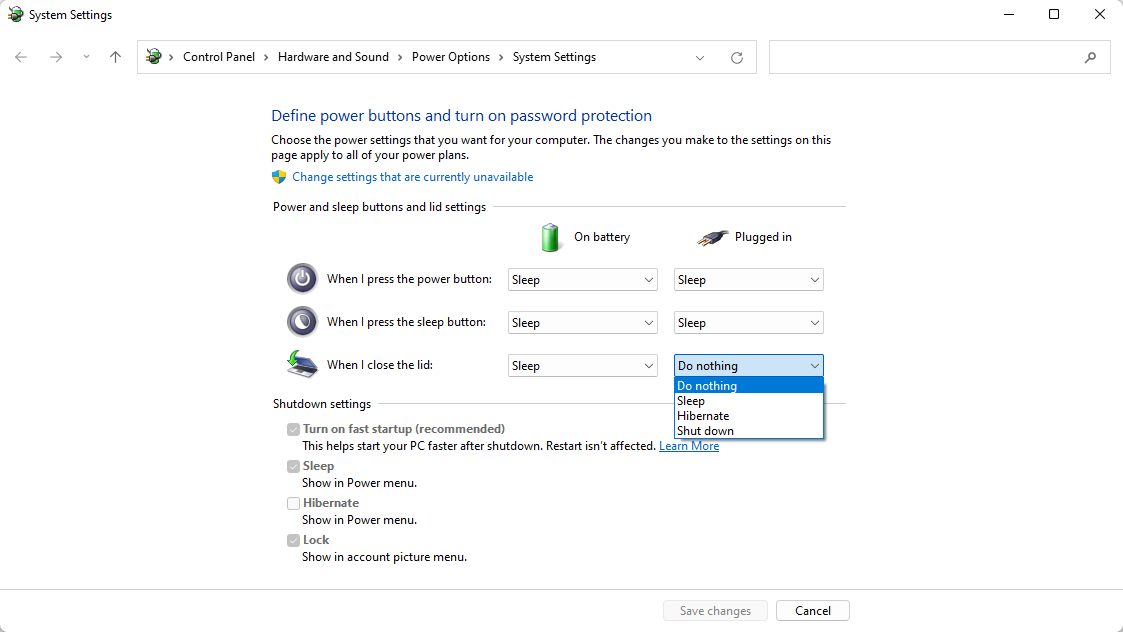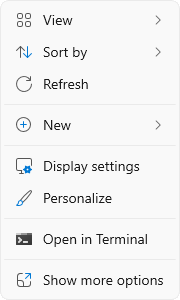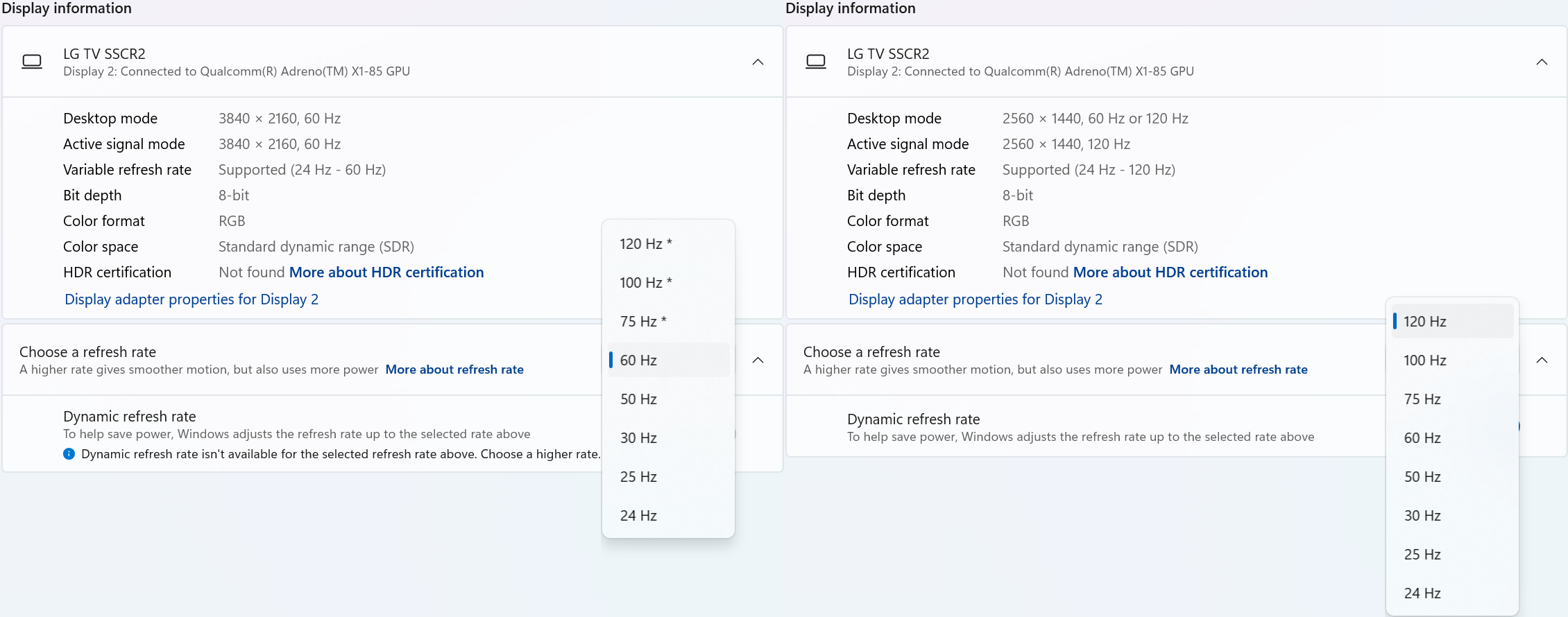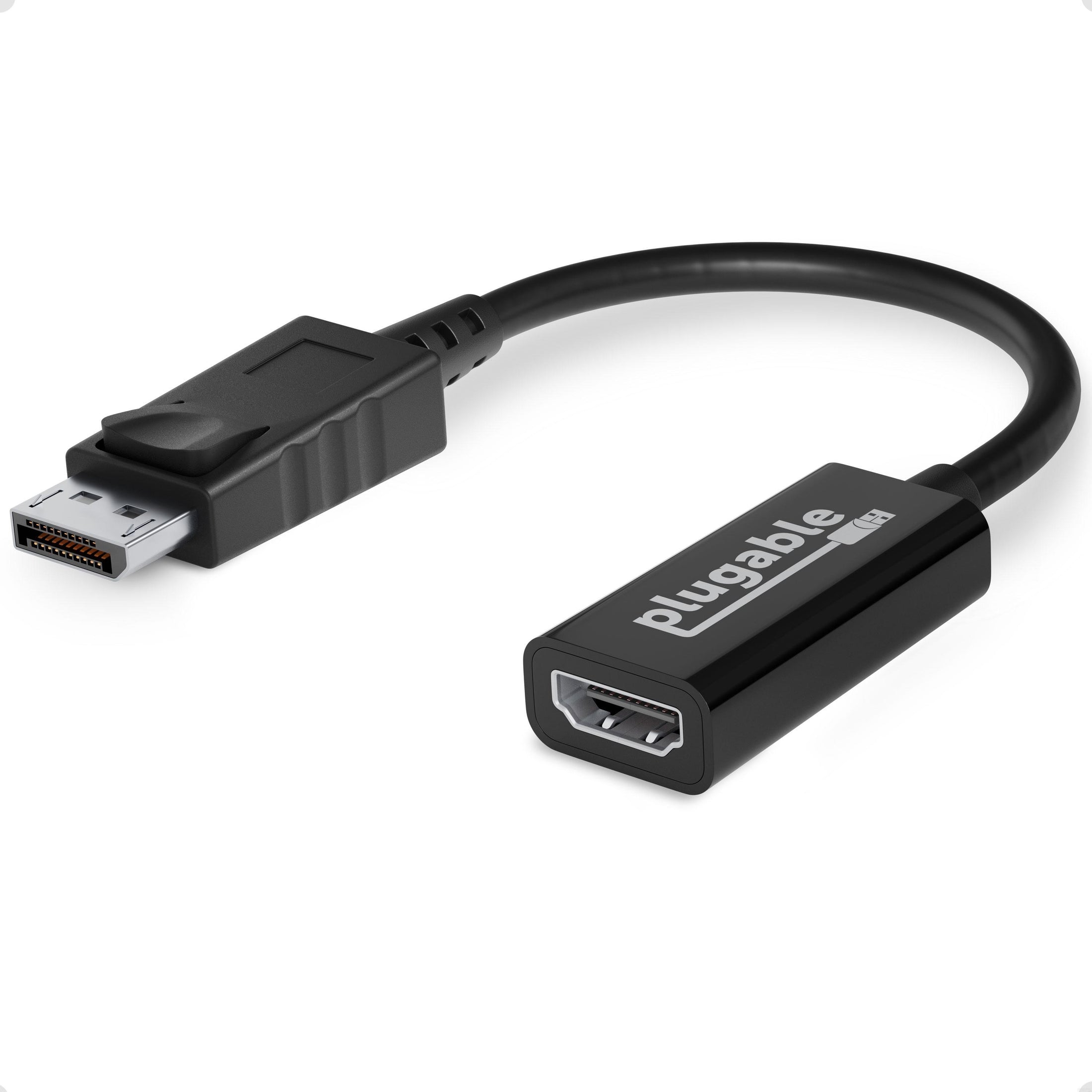
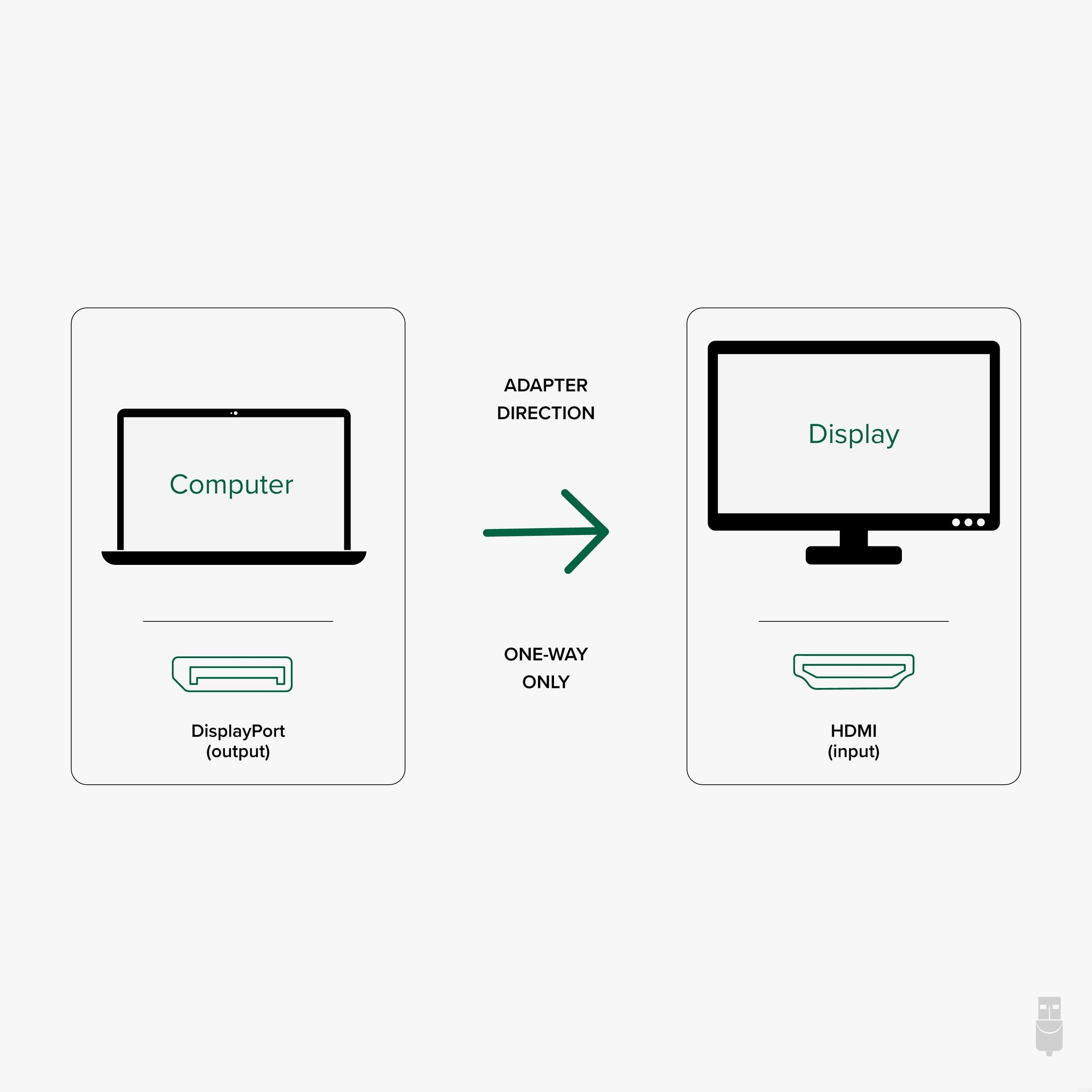
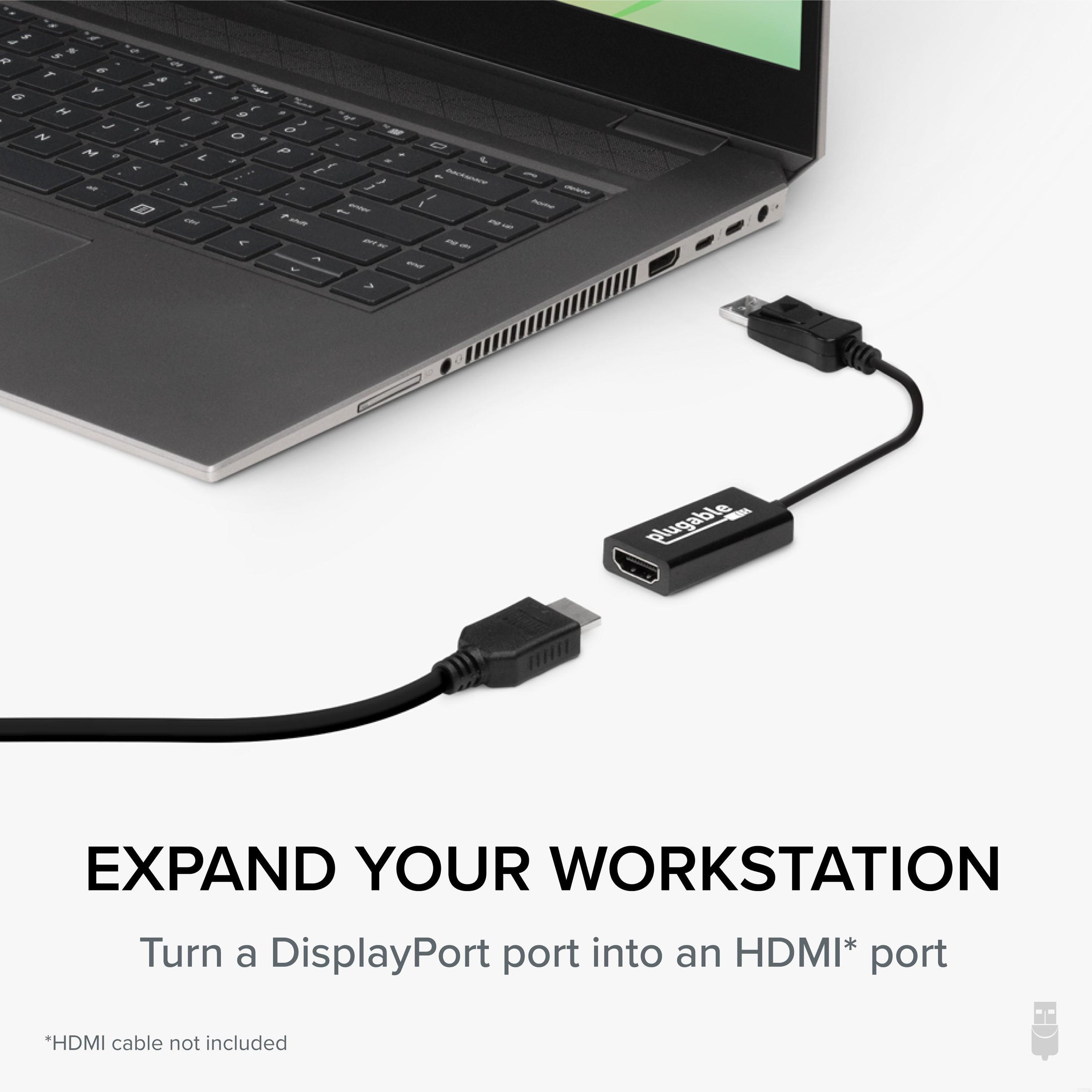
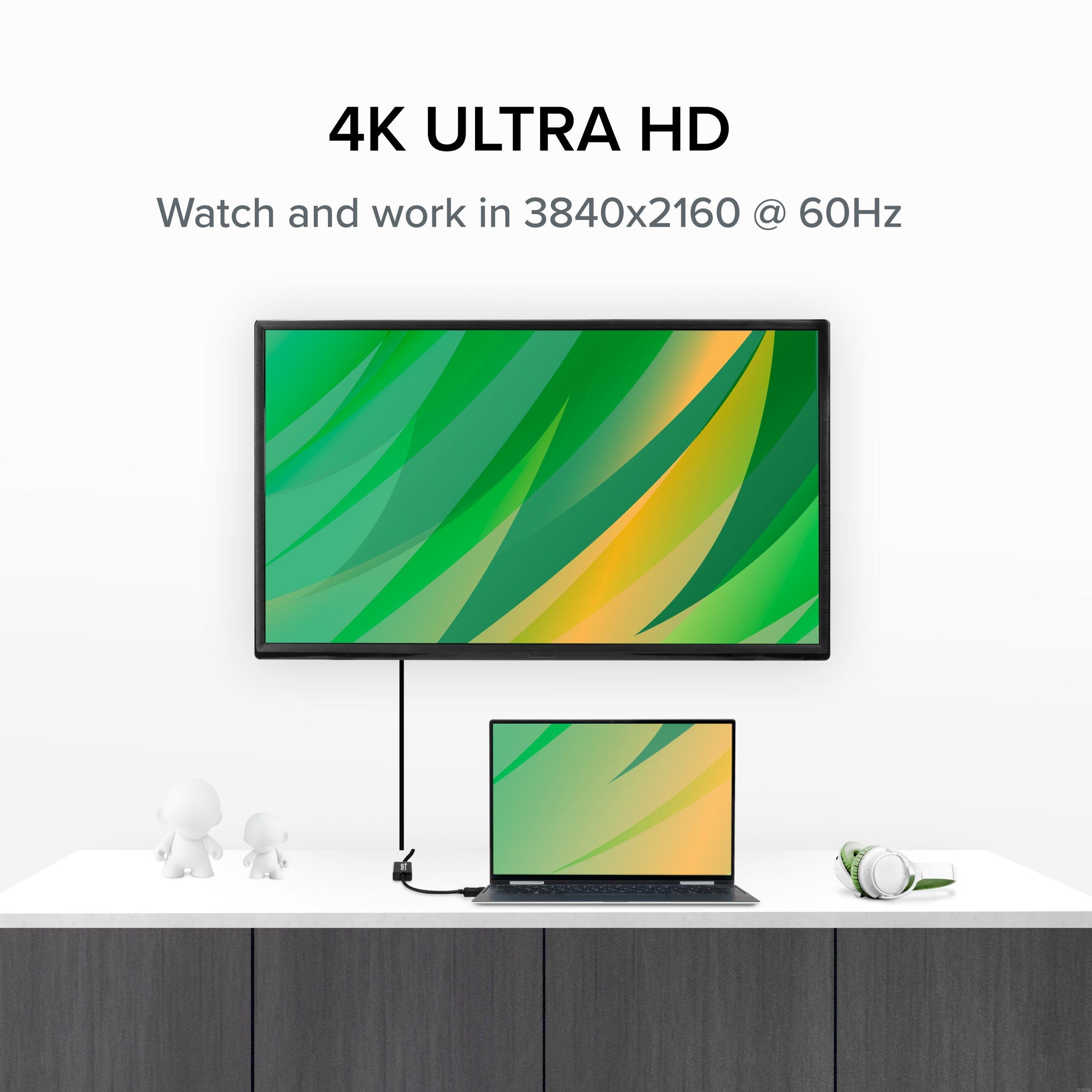
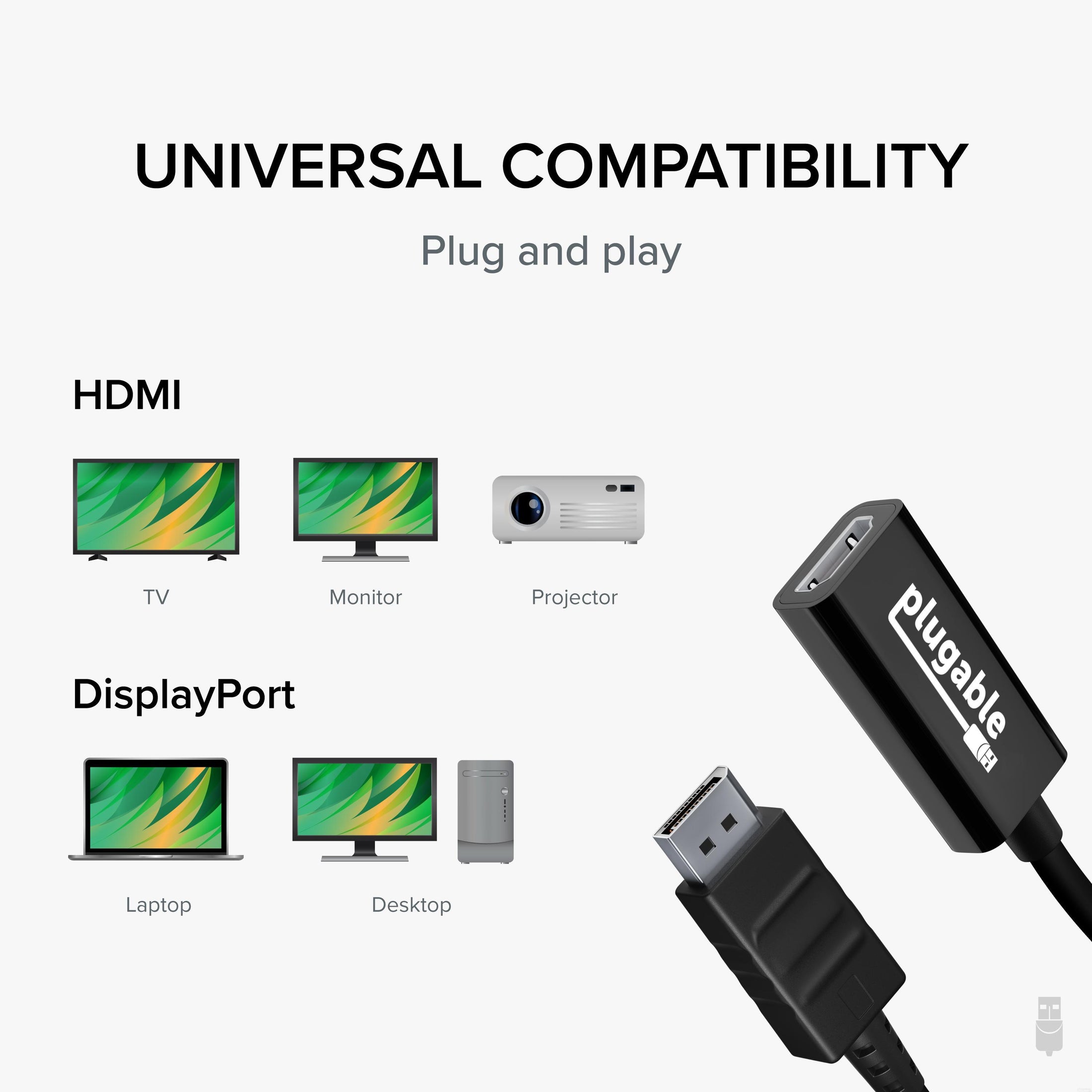
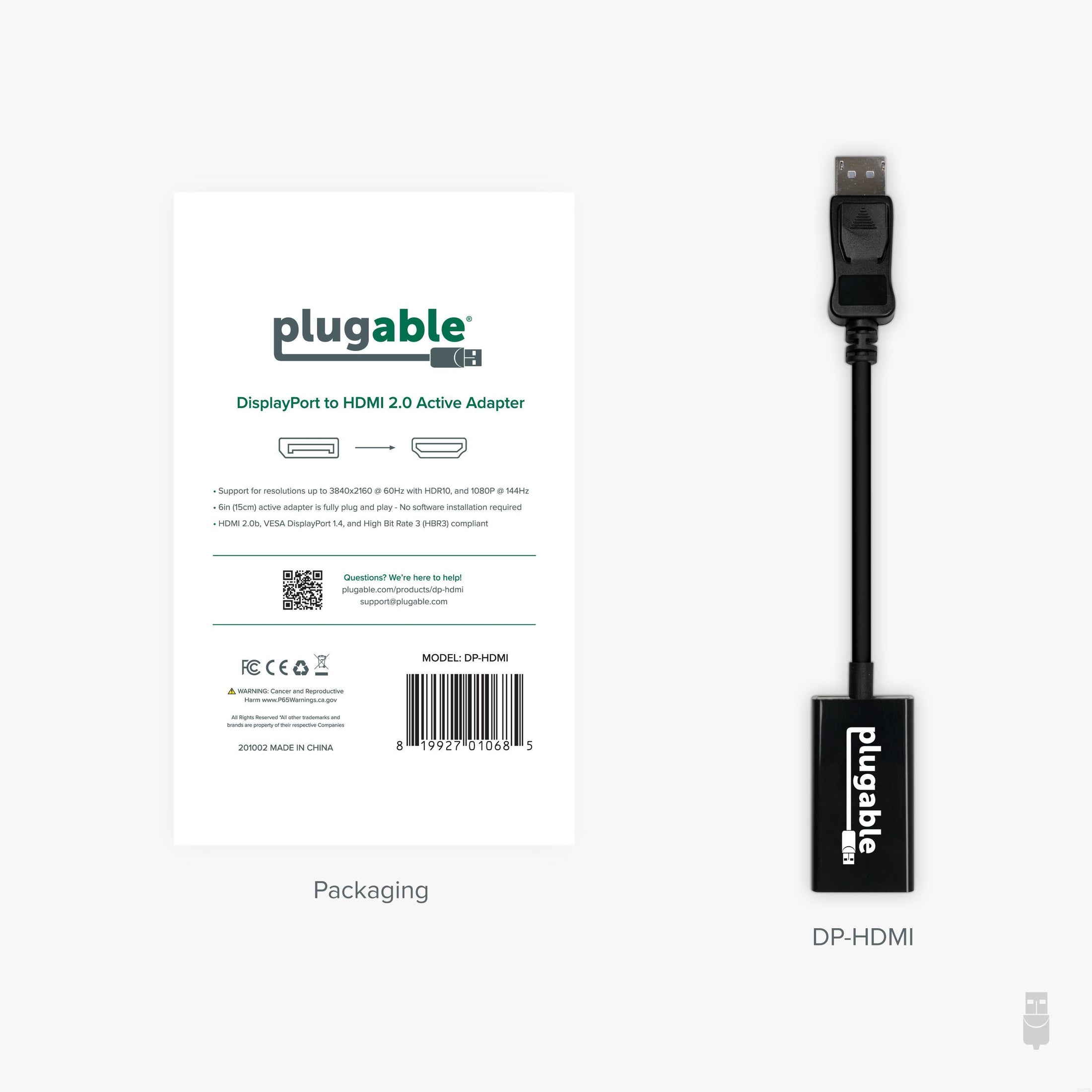








Hassle free, 2-Year Warranty
Fast, Free Shipping on Orders $35+
Lifetime Technical Support
30-Day Money Back Guarantee
Plugable DisplayPort to HDMI Active Adapter
$18.95 USD
SKU: DP-HDMIAmazon Rating : (3012 Reviews)
Features
- Displayport to HDMI Adapter— Converts a DisplayPort output on your laptop or desktop to HDMI for easy connection to an HDMI capable display, monitor, or HDTV
- Supported Resolutions— Supports HDMI displays up to 3840x2160 @ 60Hz (4K) resolution
- Standards— VESA (DisplayPort) certified. Compliant with VESA Dual-Mode DisplayPort 1.2, High Bit Rate 2 (HBR2), and HDMI 2.0 standards. AMD Eyefinity compatible
- Note— Will convert from DisplayPort on computer to HDMI on monitor only. Not bidirectional and not compatible with gaming consoles, DVD/BluRay players, or USB ports. Note your source and display both need to support the desired resolution
- 2-Year Coverage, Lifetime Support— Every Plugable product, including this DisplayPort to HDMI Adapter, is covered against defects for 2 years and comes with lifetime support. If you ever have questions, contact our North American-based team - even before purchase
Free 3-Day Continental U.S. Shipping on Orders Over $35!



